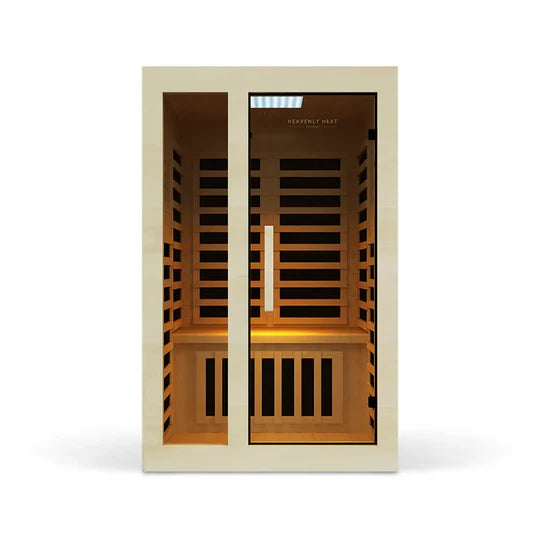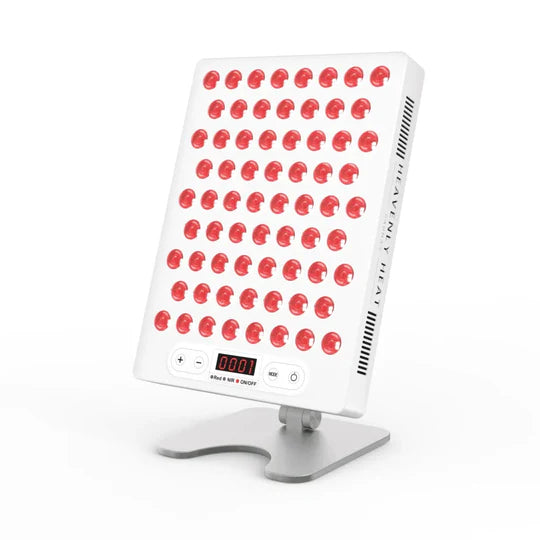Cold plunge vs Sauna: What Are The Benefits of Each?

Ready to supercharge your wellness routine? Cold plunges and saunas both offer impressive health perks, but each provides unique benefits for body and mind.
Curious about which one boosts circulation, eases muscle pain, or enhances mood more effectively? Let’s dive into the benefits of each to see which is the best fit for you!
What is the Difference between a cold plunge and a sauna?
The main difference between a cold plunge and a sauna lies in temperature. A cold plunge involves immersing your body in ice-cold water, while a sauna uses high heat to promote sweating and relaxation.
You can use them together for a contrast therapy routine, alternating between hot and cold for enhanced circulation and recovery.
However, it's essential to be cautious of the risks: prolonged exposure to extreme temperatures can strain your body. Always listen to your body and avoid overdoing it.

Benefits of Cold Plunge
Better sleep
Cold plunges can improve sleep quality, especially after exercise. One study found that full-body cold immersion, including the head, increased deep sleep and reduced movement and wakefulness during the night.
This means better, more restful sleep, which helps the body recover faster and more effectively after workouts.
Boosted mood
"Although some may dismiss cold-water treatment as a passing fad, it has been used for years for its health benefits," says Carmen Van Rensburg.
A cold plunge can provide a powerful boost to your mood. For instance, research involving cold-water immersion showed a notable improvement in mood among participants.
After a 20-minute dip in cold sea water at 13.6°C, individuals experienced a significant reduction in negative emotions like tension, anger, and depression, while positive feelings of vigor and self-esteem increased.
This natural mood lift makes cold plunges a popular choice for mental rejuvenation.
Enhanced immunity
Cold plunge can help enhance immunity by activating the body’s immune system in response to stress.
A study by C. Martin Beaven et al. examined the effects of cold water immersion on the immune system.
They found that after six weeks of regular cold plunges (three times a week), there was a slight but significant increase in immune markers, such as monocytes and T lymphocytes.
These changes suggest cold plunges may provide a mild boost to immune function.
Better circulation
Cold plunges can boost circulation by causing vasoconstriction, or narrowing of blood vessels, which then rapidly opens (vasodilation) once you're out of the cold.
This “shunting” effect helps flush out metabolites and deliver fresh, oxygenated blood to tired muscles. Research on alternating hot–cold water treatment—commonly used in athlete recovery—highlights this circulation benefit, noting its potential to reduce swelling and support faster muscle repair.
Although more studies are needed, cold plunges are already popular among coaches and athletes for recovery support.
Improves Mental health
Cold plunge activities, like ice baths and cold showers, could do wonders for your mental health.
Research shows that regular cold-water immersion (CWI) helps reduce stress, anxiety, and depression while boosting resilience and mental toughness.
A study found that people who engage in cold-water activities frequently experience improved self-efficacy and mental strength.
Even better, the more often you take the plunge, the greater the benefits.
While cold exposure can impair cognitive functions like attention and memory in some cases, its psychological effects—especially on mental fortitude—seem to be a game-changer for many.
Benefits of Sauna
Improved circulation
One major benefit of using a sauna is improved circulation, which may help boost cardiovascular health.
Research shows that regular sauna sessions, a Finnish tradition with growing popularity worldwide, may reduce the risk of vascular diseases like high blood pressure and cardiovascular disease.
This could be due to sauna heat stimulating blood flow, which helps relax arteries, improve heart function, and reduce stiffness in blood vessels.
By enhancing circulation, sauna bathing supports better overall health, making it a valuable practice for wellness and relaxation.
Reduced risk of cardiovascular disease
Regular sauna use has been shown to reduce the risk of cardiovascular diseases. A Finnish study found that people who used the sauna two to three times a week had a significantly lower risk of fatal heart disease and overall cardiovascular mortality compared to those who used it just once a week.
Another study revealed that the frequency and duration of sauna sessions were inversely related to the risk of fatal CVD events.
Dr. Susanna Søberg also recommends sauna sessions of 10 to 15 minutes, pointing out that longer sessions, up to 30 minutes, can offer maximum heart health benefits without increasing risk.
Regular sauna bathing could be a simple yet powerful way to protect your heart.
Improved respiratory function
Sauna bathing has been linked to various health benefits, including positive effects on respiratory function. Research suggests that frequent sauna use may reduce the risk of respiratory diseases like chronic obstructive pulmonary disease (COPD), asthma, and pneumonia.
A study conducted with Finnish men found that those who used a sauna more frequently—3 to 7 times per week—had a significantly lower risk of developing COPD compared to those who used it less frequently (1–2 times per week).
After adjusting for factors like smoking and pre-existing health conditions, the risk of COPD was reduced by 38% in those who used the sauna more often.
These results suggest that sauna bathing could potentially lower inflammation and oxidative stress, both of which are key contributors to the development and progression of respiratory diseases.
Additionally, sauna use has been shown to improve lung function by increasing vital capacity and forced expiratory volume (FEV), which are vital indicators of respiratory health.
The heat from the sauna can also help hydrate the respiratory tract, providing relief from congestion and promoting better airflow, which is especially beneficial for individuals with conditions like COPD.
Although further research is needed to fully understand the mechanisms behind sauna’s benefits on respiratory health, these studies indicate that incorporating sauna sessions into one’s routine could be a preventive measure to maintain and enhance respiratory function.
Better sleep
If you’re looking for better sleep, a sauna session could be your new best friend. Research shows that regular sauna use can significantly improve sleep quality.
One study found that after 12 weeks of sauna use, participants showed better sleep quality, with steam saunas proving to be particularly effective.
Another study also found that 83% of sauna users reported sleep benefits, with frequent sauna-goers experiencing higher mental well-being scores.
So, if you're struggling with restless nights, a sauna might just be the relaxation your body and mind need.
Muscle relaxation
After a tough workout, muscle relaxation is crucial, and a sauna session might just be the perfect remedy.
Research has shown that sauna use before exercise can reduce muscle soreness and improve strength recovery.
One study found that subjects who used the sauna before eccentric exercises experienced less pain and a quicker return to normal muscle function, including grip strength and wrist extension.
Another study on athletes found that infrared sauna sessions helped reduce muscle soreness and maintain performance after intense training.
So, if you're looking to ease muscle tension and speed up recovery, a sauna might be your secret weapon.
Should I combine sauna with my cold plunge routine?
Combining sauna with a cold plunge routine can offer a range of benefits, particularly for muscle recovery and overall wellness.
Studies show that alternating between heat and cold therapies, such as in contrast bath therapy, can significantly reduce muscle stiffness and fatigue.
One study found that alternating hot and cold treatments resulted in a decrease in muscle hardness, with participants reporting subjective improvements in stiffness and fatigue.
The process works by enhancing blood circulation, with heat encouraging vasodilation and cold prompting vasoconstriction.
This alternation helps to remove metabolic waste and repair muscles more effectively.
Many celebrities, including Chris Hemsworth, swear by the combination of sauna and ice baths for recovery.
Hemsworth, known for his impressive physique and intense workout routine, often shares his experience with both heat and cold treatments on social media.
After sweating it out in the sauna, he dives into an ice bath to “replenish and recover.”
He emphasizes that despite the initial discomfort, the benefits are undeniable, from reduced muscle soreness to enhanced performance in the gym.
However, Dr. Tracy L. Zaslow advises that you should always ease into hot treatments, as jumping into a very hot sauna immediately could cause your blood vessels to dilate too rapidly, leading to potential dizziness or fainting.
Always listen to your body and consult with a doctor before trying these intense therapies.
Tips for combining sauna and cold plunge
You should do cold plunge after the sauna
A cold plunge after a sauna is refreshing and boosts recovery. The sudden cold exposure reduces inflammation, improves circulation, and energizes your body.
Wait 3–7 minutes after leaving the sauna to let your body stabilize before plunging.
Take Short Cold Plunges
To get the most from combining sauna and cold plunge, start slowly, recommends Dr. Zaslow. "Working towards your goal slowly is the way to go," she says. Begin with just a few minutes, then gradually increase your time to allow your body to adjust over weeks.
Cool Down After Your Final Sauna Session
Cooling down after your sauna session is essential to help your body return to normal temperature. Spend 10–15 minutes resting in a cool environment or taking a lukewarm shower.
This step prevents overheating and lets your heart rate settle, leaving you relaxed and ready to transition smoothly.
Listen to your body
Pay attention to how your body feels when alternating between sauna and cold plunge. If you feel lightheaded, overly fatigued, or hesitant, it’s okay to skip the plunge.
Watch for signs like dizziness or discomfort, and don’t push your limits. Always prioritize how you feel over rigid routines.
| Step | Action | Duration |
| 1 | Start with a sauna session | 10–20 min |
| 2 | Rest and cool down slightly | 3–7 min |
| 3 | Take a cold plunge | 30 sec – 3 min |
| 4 | Repeat cycle (optional) | 1–3 rounds |
| 5 | Finish with a cool-down | 10–15 min |
Conclusion
Struggling to decide between a cold plunge or sauna for your wellness routine? Both offer unique benefits, from boosting mood and circulation to aiding muscle recovery and improving sleep quality.
Whether you’re looking to enhance physical performance, reduce stress, or rejuvenate your body and mind, each therapy brings its own set of advantages.
While combining both in a contrast therapy routine can maximize the benefits, the choice ultimately depends on your specific needs.
So, why not give both a try and see which one works best for your body’s needs?






































